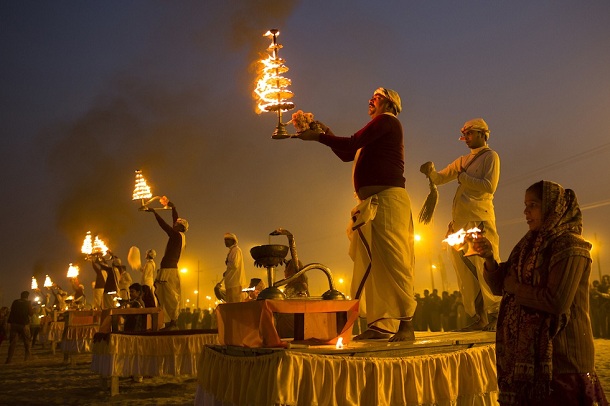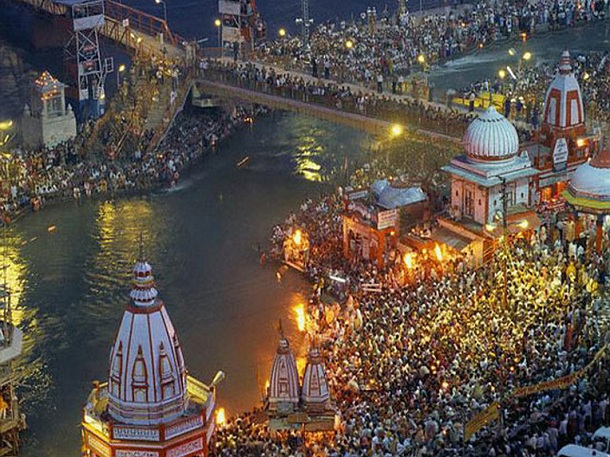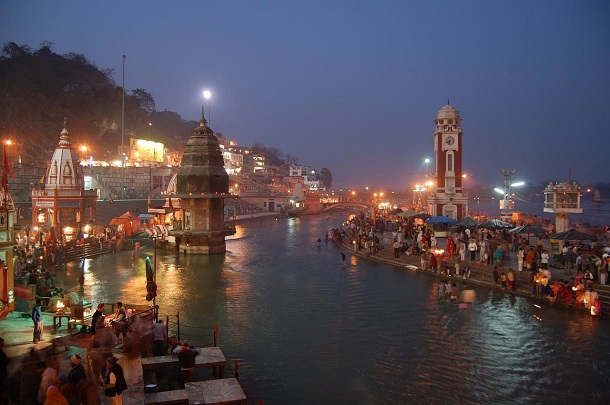It’s tipped to become the biggest gathering of human beings on earth. Millions of Hindus have already started pouring into the northern Indian city of Allahabad for the Kumbh Mela festival.
Such a large-scale event poses unfathomable challenges for organisers, especially when it comes to sanitation.
Over 55 days, somewhere between 30 and 60 million pilgrims are expected to bathe in the waters where the Yamuna and Ganges rivers meet. The first dip took place on Monday, and pilgrims from across the world will continue to arrive until February 25 to cleanse their sins and reaffirm their faith at the festival, which takes place every 12 years.
Health clinics, markets, police stations and sanitation systems have sprung up on a humble floodplain. Twenty-thousand lampposts have been erected, and there are four temporary power stations providing electricity. It’s no mean feat constructing a ‘pop-up mega city’ within a matter of months.

But the people who make it work are the cleaners. They’re the lowest paid, and they’re working around the clock. There are thousands of street cleaners, then there’s a smaller group that cleans the water.
The administration fixes specific times for the “holy men” to dip.( The term “holy men” encompasses Hindu monks and men considered to be saints ). There are lots of different camps of holy men, and they all want to take their dips first, because they want the water to be clear. People take dips in the water every day, but when the holy men take their dips it attracts big crowds – people want to dip at the same time as the holy men.
The dips are staggered – there’s always a half hour gap between each dip, so the cleaners and can go into the waters and clean. They don’t use chemical products; they fish out any objects left behind, like the flowers people take with them to bathe.
The administration has divided the festival into 14 different areas. I went to an administration meeting on Tuesday, where they discussed how the festival was going. It seemed the weak links were water and sanitation – water leakage, not enough taps. Simple issues, big impact.
[adrotate banner=”41″]



